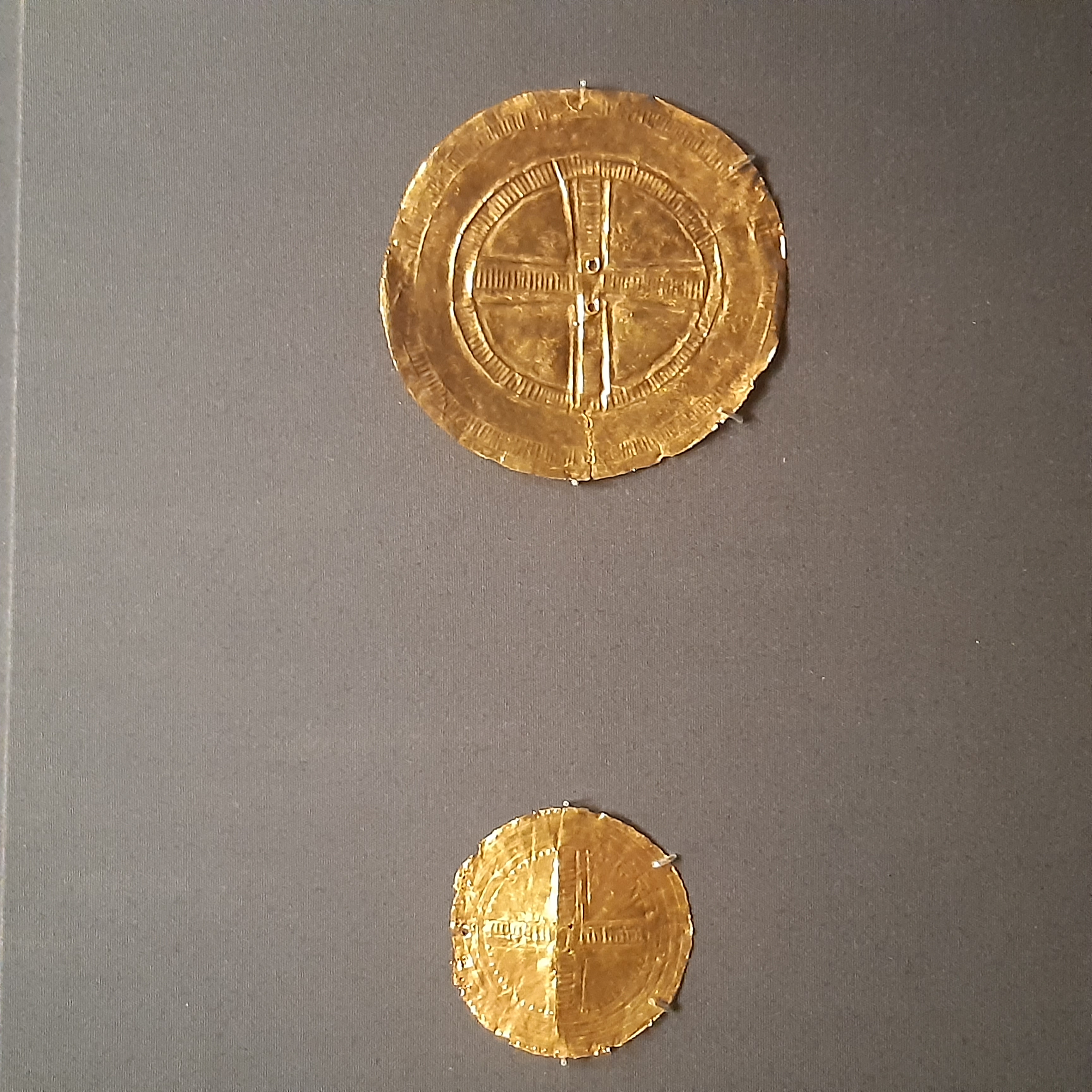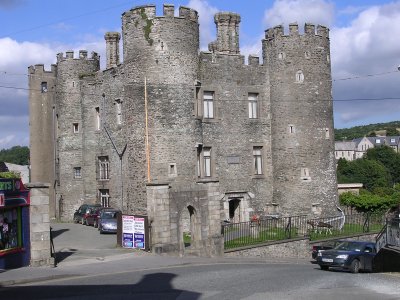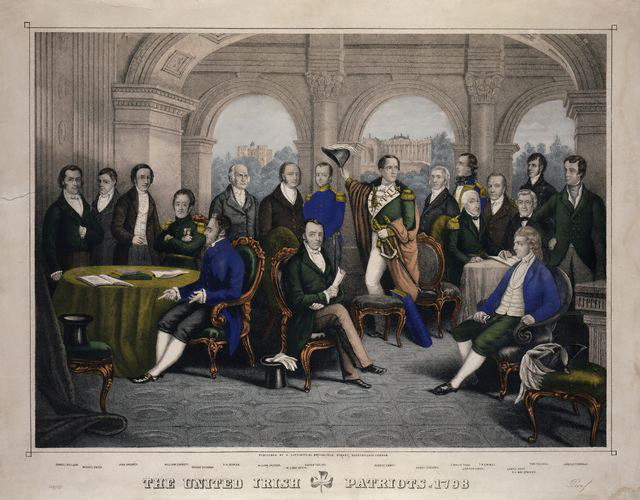|
Kilmuckridge
Kilmuckridge (), formerly Ford or The Ford, is a village in County Wexford in Ireland, near the Irish Sea coast. As of the 2016 census, the village had a population of 722 people, having more than tripled in size (from 235) in the 20 years since the 1996 census. It is known for the nearby beach at Morriscastle. History The village is in the civil parish of Kilmuckridge and in the Catholic parish of Litter (from the Irish language ''Leitir'', meaning a hillside). On older maps, the village is sometimes referred to by its older name of Ford, or The Ford. The name Kilmuckridge originally referred to a small road junction about 1.5 km from the main village and site of the Church of Ireland church. This junction was previously the location of the village post office and it is said that when the post office was moved to The Ford, the latter placename gradually declined in use. Nearby Morriscastle was once the site of a castle belonging to a prominent Gaelic family. By the 19th c ... [...More Info...] [...Related Items...] OR: [Wikipedia] [Google] [Baidu] |
County Wexford
County Wexford () is a Counties of Ireland, county in Republic of Ireland, Ireland. It is in the Provinces of Ireland, province of Leinster and is part of the Southern Region, Ireland, Southern Region. Named after the town of Wexford, it was based on the historic Gaelic Ireland, Gaelic territory of Uí Ceinnselaig, Hy Kinsella (''Uí Ceinnsealaigh''), whose capital was Ferns, County Wexford, Ferns. Wexford County Council is the Local government in the Republic of Ireland, local authority for the county. The population of the county was 163,527 at the 2022 census. History The county is rich in evidence of early human habitation.Stout, Geraldine. "Essay 1: Wexford in Prehistory 5000 B.C. to 300 AD" in ''Wexford: History and Society'', pp 1 – 39. ''Portal tombs'' (sometimes called dolmens) exist at Ballybrittas (on Bree Hill) and at Newbawn – and date from the Neolithic period or earlier. Remains from the Bronze Age period are far more widespread. Early Irish tribes formed ... [...More Info...] [...Related Items...] OR: [Wikipedia] [Google] [Baidu] |
Republic Of Ireland
Ireland ( ), also known as the Republic of Ireland (), is a country in Northwestern Europe, north-western Europe consisting of 26 of the 32 Counties of Ireland, counties of the island of Ireland, with a population of about 5.4 million. Its capital city, capital and largest city is Dublin, on the eastern side of the island, with a population of over 1.5 million. The sovereign state shares its only land border with Northern Ireland, which is Countries of the United Kingdom, part of the United Kingdom. It is otherwise surrounded by the Atlantic Ocean, with the Celtic Sea to the south, St George's Channel to the south-east and the Irish Sea to the east. It is a Unitary state, unitary, parliamentary republic. The legislature, the , consists of a lower house, ; an upper house, ; and an elected President of Ireland, president () who serves as the largely ceremonial head of state, but with some important powers and duties. The head of government is the (prime minister, ), ... [...More Info...] [...Related Items...] OR: [Wikipedia] [Google] [Baidu] |
Irish Rebellion Of 1798
The Irish Rebellion of 1798 (; Ulster Scots dialect, Ulster-Scots: ''The Turn out'', ''The Hurries'', 1798 Rebellion) was a popular insurrection against the British Crown in what was then the separate, but subordinate, Kingdom of Ireland. The main organising force was the Society of United Irishmen. First formed in Belfast by Presbyterianism, Presbyterians opposed to the landed Protestant Ascendancy, Anglican establishment, the Society, despairing of reform, sought to secure a republic through a revolutionary union with the country's Catholic Church, Catholic majority. The grievances of a rack-rented tenantry drove recruitment. While assistance was being sought from the French First Republic, French Republic and from democratic militants in Britain, martial-law seizures and arrests forced the conspirators into the open. Beginning in late May 1798, there were a series of uncoordinated risings: in the counties of County Carlow, Carlow and County Wexford, Wexford in the southeast ... [...More Info...] [...Related Items...] OR: [Wikipedia] [Google] [Baidu] |
South Africa
South Africa, officially the Republic of South Africa (RSA), is the Southern Africa, southernmost country in Africa. Its Provinces of South Africa, nine provinces are bounded to the south by of coastline that stretches along the Atlantic Ocean, South Atlantic and Indian Ocean; to the north by the neighbouring countries of Namibia, Botswana, and Zimbabwe; to the east and northeast by Mozambique and Eswatini; and it encloses Lesotho. Covering an area of , the country has Demographics of South Africa, a population of over 64 million people. Pretoria is the administrative capital, while Cape Town, as the seat of Parliament of South Africa, Parliament, is the legislative capital, and Bloemfontein is regarded as the judicial capital. The largest, most populous city is Johannesburg, followed by Cape Town and Durban. Cradle of Humankind, Archaeological findings suggest that various hominid species existed in South Africa about 2.5 million years ago, and modern humans inhabited the ... [...More Info...] [...Related Items...] OR: [Wikipedia] [Google] [Baidu] |
British Army
The British Army is the principal Army, land warfare force of the United Kingdom. the British Army comprises 73,847 regular full-time personnel, 4,127 Brigade of Gurkhas, Gurkhas, 25,742 Army Reserve (United Kingdom), volunteer reserve personnel and 4,697 "other personnel", for a total of 108,413. The British Army traces back to 1707 and the Acts of Union 1707, formation of the united Kingdom of Great Britain which joined the Kingdoms of Kingdom of England, England and Kingdom of Scotland, Scotland into a Political union, single state and, with that, united the English Army and the Scots Army as the British Army. The Parliament of England, English Bill of Rights 1689 and Convention of the Estates, Scottish Claim of Right Act 1689 require parliamentary consent for the Crown to maintain a peacetime standing army. Members of the British Army swear allegiance to the Charles III, monarch as their commander-in-chief. The army is administered by the Ministry of Defence (United Kingd ... [...More Info...] [...Related Items...] OR: [Wikipedia] [Google] [Baidu] |
Irish War Of Independence
The Irish War of Independence (), also known as the Anglo-Irish War, was a guerrilla war fought in Ireland from 1919 to 1921 between the Irish Republican Army (1919–1922), Irish Republican Army (IRA, the army of the Irish Republic) and United Kingdom of Great Britain and Ireland, British forces: the British Army, along with the quasi-military Royal Irish Constabulary (RIC) and its paramilitary forces the Auxiliary Division, Auxiliaries and Ulster Special Constabulary (USC). It was part of the Irish revolutionary period. In April 1916, Irish republicanism, Irish republicans launched the Easter Rising against British rule in Ireland, British rule and Proclamation of the Irish Republic, proclaimed an Irish Republic. Although it was defeated after a week of fighting, the Rising and the British response led to greater popular support for Irish independence. In the 1918 Irish general election, December 1918 election, republican party Sinn Féin won a landslide victory in Ireland. O ... [...More Info...] [...Related Items...] OR: [Wikipedia] [Google] [Baidu] |
Royal Irish Constabulary
The Royal Irish Constabulary (RIC, ; simply called the Irish Constabulary 1836–67) was the police force in Ireland from 1822 until 1922, when all of the island was part of the United Kingdom of Great Britain and Ireland, United Kingdom. A separate civic police force, the unarmed Dublin Metropolitan Police (DMP), patrolled the capital and parts of County Wicklow, while the cities of Derry and Belfast, originally with their own police forces, later had special divisions within the RIC. For most of its history, the ethnic and religious makeup of the RIC broadly matched that of the Irish population, although Anglo-Irish Protestantism in Ireland, Protestants were overrepresented among its senior officers. The RIC was under the authority of the Dublin Castle administration, British administration in Ireland. It was a quasi-military police force. Unlike police elsewhere in the United Kingdom, RIC constables were routinely armed (including with carbines) and billeted in barracks, and ... [...More Info...] [...Related Items...] OR: [Wikipedia] [Google] [Baidu] |
Gorey
Gorey () is a market town in north County Wexford, Ireland. It is bypassed by the main N11 road (Ireland), M11 Dublin to Wexford road. The town is also connected to the Gorey railway station, railway network along the same route. Local newspapers include the ''Gorey Guardian''. As a growing commuter town to Dublin for some residents, there has been an increase in population in the early 21st century. Between 1996 and 2002, the population of the surrounding district grew by 23%, and the town itself almost trebled in population (from 3,939 to 11,517 inhabitants) in the period between the 1996 and 2022 census. Name While the town and parish were sometimes historically known as Kilmichaelogue (), the town's modern English name may derive from the Irish language, Irish ''Gabhraighe'', meaning a "a place abounding in goats". The town was granted a charter as a borough in 1619, under the name Newborough. However, as noted in ''A Topographical Dictionary of Ireland'' (published in 183 ... [...More Info...] [...Related Items...] OR: [Wikipedia] [Google] [Baidu] |
1916 Rising
The Easter Rising (), also known as the Easter Rebellion, was an armed insurrection in Ireland during Easter Week in April 1916. The Rising was launched by Irish republicans against British rule in Ireland with the aim of establishing an independent Irish Republic while the United Kingdom was fighting the First World War. It was the most significant uprising in Ireland since the rebellion of 1798 and the first armed conflict of the Irish revolutionary period. Sixteen of the Rising's leaders were executed starting in May 1916. The nature of the executions, and subsequent political developments, ultimately contributed to an increase in popular support for Irish independence. Organised by a seven-man Military Council of the Irish Republican Brotherhood, the Rising began on Easter Monday, 24 April 1916 and lasted for six days. Members of the Irish Volunteers, led by schoolmaster and Irish language activist Patrick Pearse, joined by the smaller Irish Citizen Army of James Conn ... [...More Info...] [...Related Items...] OR: [Wikipedia] [Google] [Baidu] |
Enniscorthy
Enniscorthy () is the second-largest town in County Wexford, Republic of Ireland, Ireland. The town is located on the picturesque River Slaney and in close proximity to the Blackstairs Mountains and Ireland's longest beach, Curracloe. The Placenames Database of Ireland sheds no light on the origins of the town's name. It may refer either to the "Island of Corthaidh" or the "Island of Rocks". The cathedral of the Roman Catholic Diocese of Ferns is located in the town as well as an array of other historical sites such as Enniscorthy Castle and the key battle site of the Irish Rebellion of 1798, 1798 Rebellion. At the 2022 census of Ireland, 2022 census, the population of the urban area of Enniscorthy was 12,310. The town is twinned with Gimont, France. History Enniscorthy Castle Enniscorthy Castle is an imposing Norman stronghold, which dates from 1205 and was a private dwelling until 1951. The castle was built by the DePrendergasts. In the early 1580s, the poet Edmund Spense ... [...More Info...] [...Related Items...] OR: [Wikipedia] [Google] [Baidu] |
Irish Republican Brotherhood
The Irish Republican Brotherhood (IRB; ) was a secret oath-bound fraternal organisation dedicated to the establishment of an "independent democratic republic" in Ireland between 1858 and 1924.McGee, p. 15. Its counterpart in the United States of America and Canada was initially the Fenian Brotherhood, but from the 1870s it was Clan na Gael. The members of both wings of the movement are often referred to as "Fenians". The IRB played an important role in the history of Ireland, as the chief advocate of republicanism during the campaign for Ireland's independence from the United Kingdom, successor to movements such as the United Irishmen of the 1790s and the Young Irelanders of the 1840s. As part of the New Departure of the 1870s–80s, IRB members attempted to democratise the Home Rule League and its successor, the Irish Parliamentary Party, as well as taking part in the Land War. The IRB staged the Easter Rising in 1916, which led to the establishment of the first Dáil Éir ... [...More Info...] [...Related Items...] OR: [Wikipedia] [Google] [Baidu] |






